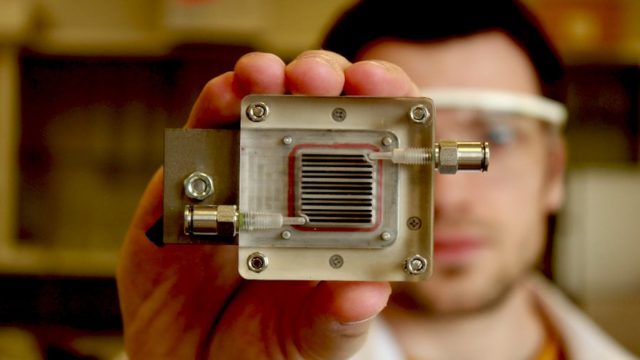
Short Bytes: A team of Belgian researchers has created a tiny device that performs the dual task of cleaning air and hydrogen generation. This device relies on a process called heterogeneous photocatalysis, which uses catalyst and light for carrying out a chemical reaction. The two compartments of the device are used for air purification and hydrogen generation. The current version of this device is a proof-of-concept with ample room for improvement.
ncreasing pollution levels and energy crisis are one of the biggest problems being faced by our modern world. We are overusing and depleting our fossil fuel reserves, which is increasing pollutants in the atmosphere to an alarming level. Various plans which are being made by different countries and organizing are looking to tackle both these issues.
A group of researchers from the University of Antwerp and KU Leuven has devised a method to a similar job. They’ve built a tiny device that purifies the air and creates hydrogen gas for fuel.
This device performs its job using a chemical reaction called heterogeneous photocatalysis. To trigger the chemical reaction, it uses light and a semiconductor as a special catalyst. The concept of an all-solid photoelectrochemical cell was first proposed in 2009. Based on that design, the researchers successfully used water vapors from the air as the anode feed.
In their recently published research paper, the researchers have outlined their method of extracting the energy stored in airborne organic pollutants and turning the contaminants to less harmful carbon dioxide.
In this process, the oxidation of volatile organic compounds takes place at photoanode. The production of hydrogen takes place at the cathode (dark), which is on the opposite side of solid electrolyte membrane that conducts proton. In simple language, this tiny device has two rooms which are used for air purification and hydrogen generation.
The researchers have made it clear that it’s only a proof-of-concept with an ample room for improvement. It’s just a few square centimeters large. Having said that, researchers are confident that they can scale their design and use it on an industrial scale for dual benefits.
Did you find this device with dual purpose interesting? Don’t forget to share your views.

0 comments:
Post a Comment